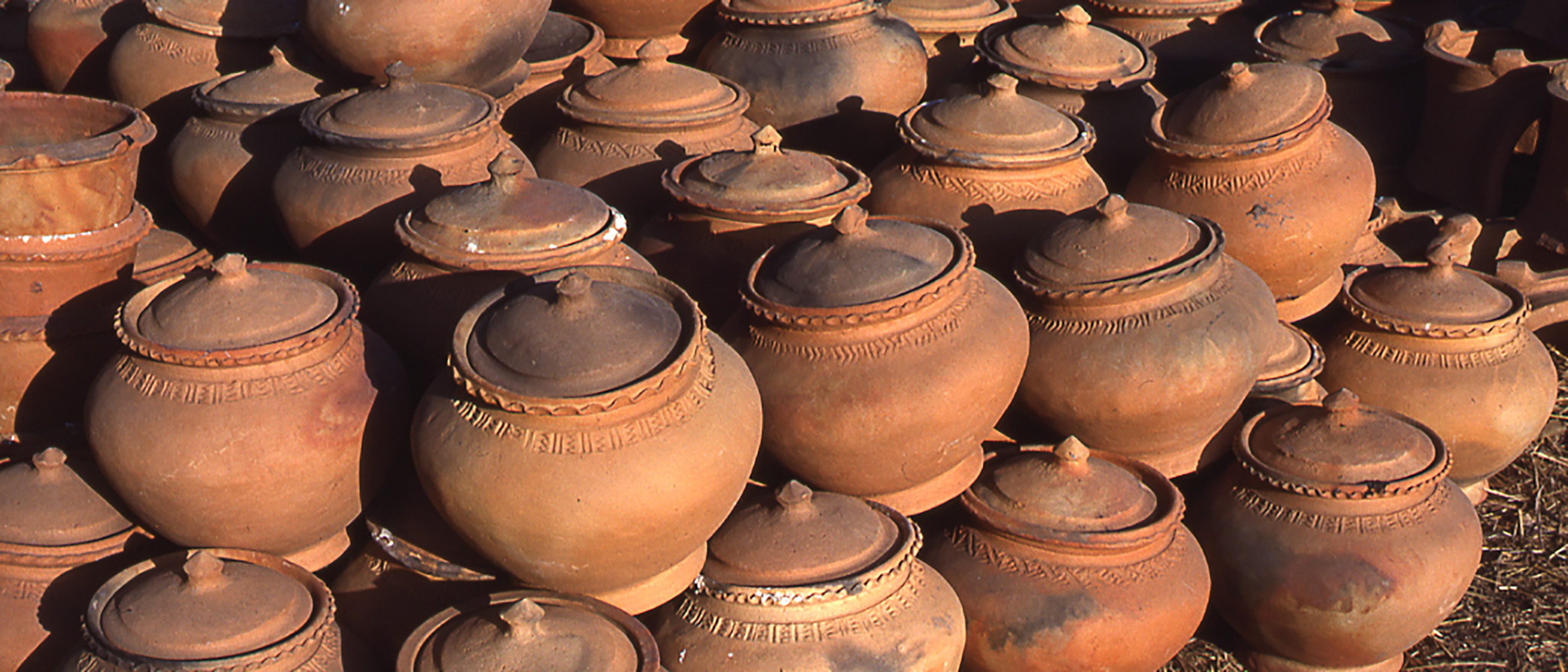
The Table of Mainland Southeast Asian Chronologies represents a compilation of widely accepted scholarship in the field of Southeast Asian history as put forth by leaders in their fields. In addition, efforts have been made to keep the chronologies contemporary with the latest reliable scholarship. For reference, a bibliography of sources used to create the chronologies can be found below.
Each underlined historical epoch is linked to related ceramics in the collections.
In looking macrocosmically at Southeast Asian historiography, one problem has presented itself anew with each approach to the region. David Wyatt regards this as "the problem of defining geographic units of history...[by]...reading back into previous history the units that have been the scenes of modern history.... The problem is further compounded when such ‘national' units are identified and defined in ethnic terms.... Even when such labels were placed on groups of people by contemporary sources, we must not assume that those labels necessarily meant the same thing in former times as the do today." (Wyatt, 2003, 3)
I have attempted to address the problem Wyatt eloquently phrased through two means. First, the chronological tables indicate the relationship between time and space for the major political entities that occupied the Southeast Asian landscape. Included below each period/kingdom/dynasty are notes on the capital city and known cultural boundaries through time. Second, inter-polity exchanges are depicted through the use of language that focuses attention on specific actors rather than on general ethnic categories.
The series of historical maps of Southeast Asia also reflects this dynamic landscape over time. Credit is given for the source of each map.
Every effort is being made to make the chronologies complete and to keep them updated as new scholarship is produced and old scholarship is uncovered. Suggestions for citations are welcome and may be submitted through Field Notes.
The Table of Mainland Southeast Asian Chronologies and related historical maps was compiled by George Ashley Williams IV.
Bibliography of related sources
Aung-Thwuin, Michael A. 2005. The Mists of Rāmañña-The Legend That Was Lower Burma. Honolulu: University of Hawai'i Press.
Chandler, David. 2000. A History of Cambodia. 3rd ed. Boulder: West View Press.
Hudson, Bob. 2004. "The Origins of Bagan: The archaeological landscape of Upper Burma to AD 1300". PhD, University of Sydney, Sydney.
Lieberman, Victor. 2003. Strange Parallels—Southeast Asia in Global Context, c. 800–1830. Vol. 1: Integration on the Mainland. New York: Cambridge University Press.
Stuart-Fox, Martin. 1998. The Lao Kingdom of Lān Xāng: Rise and Decline. Bangkok: White Lotus Co. Ltd.
Taylor, Keith W. 1992. "The Early Kingdoms". 55–136 in The Cambridge History of Southeast Asia, From Early Times to c.1800, edited by Nicholas Tarling. Cambridge and New York: Cambridge University Press.
Vickery, Michael. 2005. "Champa Revised". Review of Reviewed Item. ARI Working Paper, No. 37, {Wade, 2007 #1021}.
Wyatt, David K. 1982. Thailand-A Short History. New Haven and London: Yale University Press.
---. 2001. "Relics, oaths and politics in thirteenth-century Siam". Journal of Southeast Asian Studies 32 (1): 3–66.